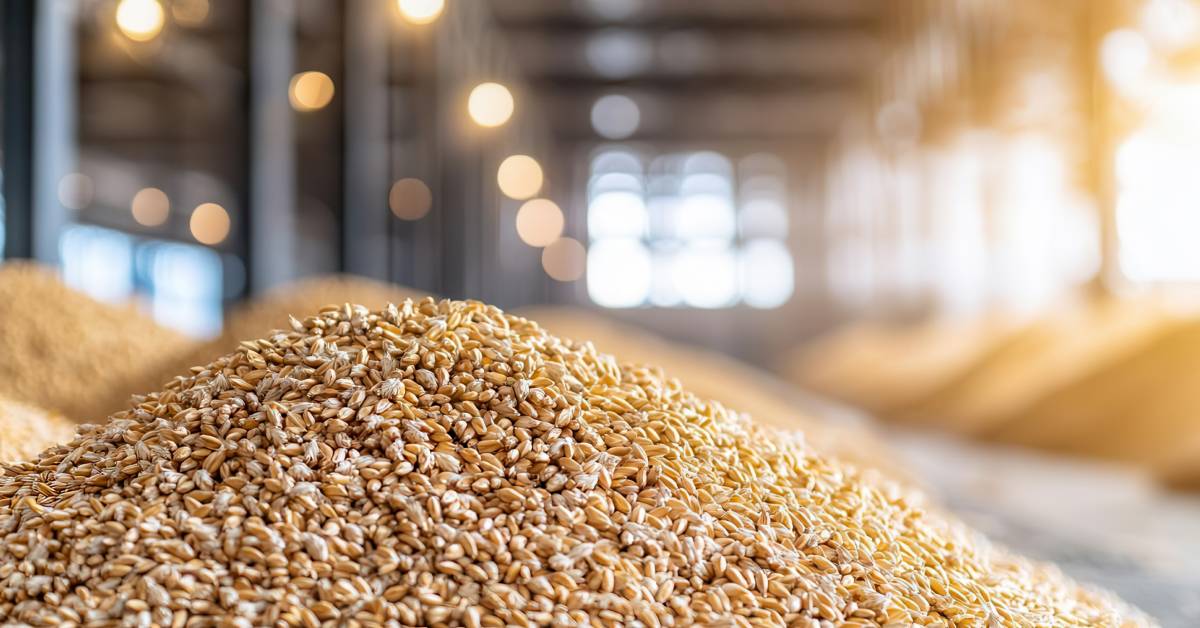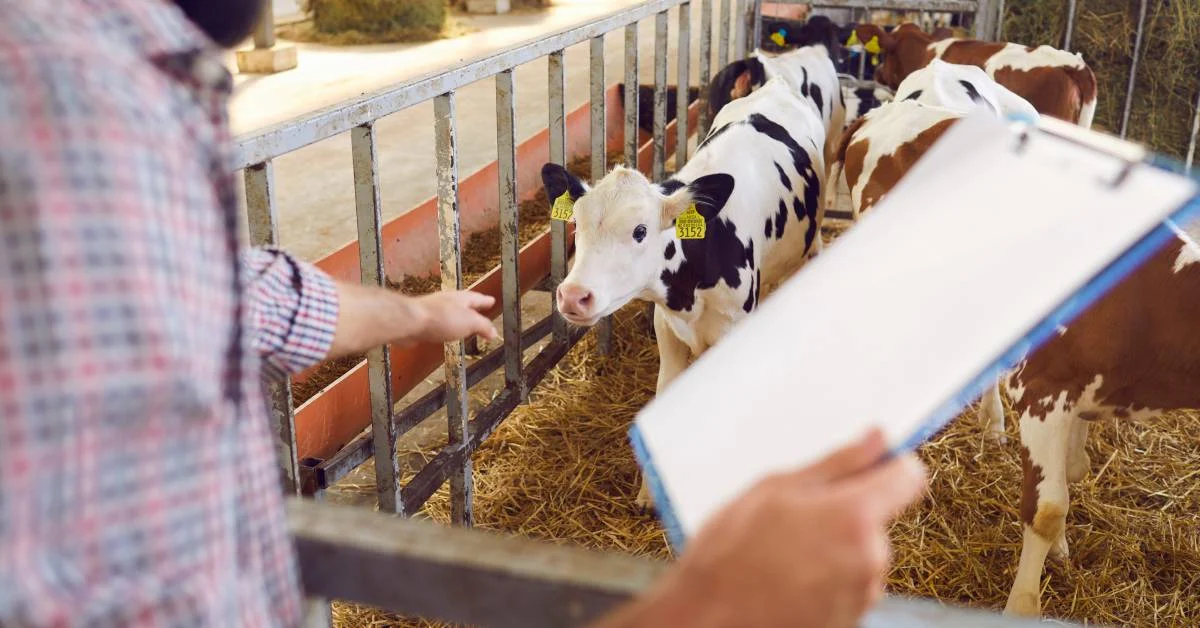Grain storage is one of the most important steps after harvest. The way grain is handled and stored directly determines its quality, shelf life, and the price it commands in the market. For farmers and grain handlers, good storage is not only about keeping grain safe, it is about protecting the value of their hard work and ensuring long-term profitability.
When storage practices are neglected, the risks add up quickly. Spoilage caused by high moisture, mold growth from poor aeration, pest infestations, and temperature fluctuations can all reduce the quality of grain in a matter of weeks. Even a small percentage of damage can mean significant financial losses when dealing with large volumes. In fact, studies show that poor storage management contributes to between 20% and 50% of post-harvest losses in developing regions, underscoring just how critical proper storage is for both food security and profitability. Beyond market value, poor storage can also affect food safety and make it harder for producers to meet buyer requirements.
This blog will cover proven best practices for grain handling and storage that can be applied on farms of all sizes. We will explore the principles of storing grain safely, methods that reduce losses during handling, and storage options ranging from temporary solutions to long-term bin systems. You will also learn how to manage grain once it is in storage, along with the role of modern tools like Folio3 AgTech’s Grain ERP in protecting the grain quality.
Understanding Grain Storage Basics
Grain storage may seem simple at first glance, but in practice, it involves managing several factors that can quickly compromise quality if left unchecked. Moisture, temperature, pests, and poor handling practices are the main challenges that farmers and grain handlers face. Even small imbalances in these areas can lead to rapid deterioration, turning a profitable harvest into a financial loss.
Moisture is the most critical factor. Grain harvested with higher-than-recommended moisture content is at risk of mold growth and spoilage. On the other hand, grain that becomes too dry during storage can lose weight, directly reducing market value. Temperature is equally important, as fluctuations inside bins or silos create conditions where insects and fungi thrive. Pests such as weevils, beetles, and rodents can multiply quickly, causing damage that is both visible and hidden. Safe handling also plays a role since cracked kernels or excess dust increase the chances of spoilage.
Another important consideration is grain physiology. Grains are living organisms even after harvest, and they continue to “breathe” through a process called respiration. This natural activity generates heat and moisture, especially when grain is stored in bulk. Without proper aeration and monitoring, the buildup of heat and humidity can create hotspots that encourage mold and insect infestations.
The way grain is handled and stored directly affects its final market value. Buyers look for clean, dry, and undamaged grain that meets quality standards. Poor practices not only reduce weight and grade but can also limit access to premium markets. By understanding these storage basics, farmers can protect both the physical quality of their grain and the financial return it delivers.
How Should Grains Be Stored? Key Principles Every Farm Should Follow
Storing grain safely requires a combination of good preparation, careful monitoring, and consistent management. The following principles are essential for every farm, regardless of size or storage capacity.
Target Moisture Levels by Crop Type
Moisture is the single most important factor in grain storage. Each crop has a recommended safe moisture range: for example, wheat and corn are typically stored below 14%, while soybeans should be closer to 12%. Grain that is stored above these levels risks rapid mold growth and spoilage, while overly dry grain can lose weight, reducing profitability. Using moisture meters before storage helps ensure grain enters bins or silos at the right level.
Temperature Management Through Aeration and Cooling
Temperature control prevents the buildup of heat that leads to insect and mold problems. Aeration fans or natural cooling systems should be used to keep grain temperatures close to the average outside air. Seasonal cooling, lowering grain temperature as outside conditions change, helps extend storage life and minimize losses. Even small “hot spots” inside bins can spread quickly if left unmanaged.
Proper Cleaning and Drying Before Storage
Grain should be thoroughly cleaned and dried before it goes into storage. Removing dust, broken kernels, and foreign material reduces the risk of spoilage, since these particles hold moisture and attract pests. Drying systems, whether natural air drying or heated drying, are critical for preparing grain for long-term storage.
Avoiding Cross-Contamination Between Grain Types
Different grains have different storage needs, and mixing them can create problems. Residual grain from previous harvests can also contaminate new batches, lowering overall quality. Cleaning bins, trucks, and handling equipment before each use reduces the risk of contamination.
Stock Rotation
A simple but effective principle is to rotate stock so that the oldest grain is used or sold first. This “first in, first out” method prevents older grain from staying in storage too long and developing quality issues. Clear record-keeping helps farmers know exactly when each batch entered storage.
Grain Handling: Practices That Preserve Quality
Grain handling is more than moving grain from one point to another. The way grain is handled directly impacts its condition once it enters storage. Proper techniques not only protect quality but also reduce the risk of losses that can accumulate throughout the season.
Safe Handling to Reduce Breakage and Dust
Grain is most vulnerable when it is being moved. Rough handling causes kernel breakage and excess dust, both of which lower quality and increase spoilage risk in storage. Cracked kernels are more susceptible to mold and insect attacks. Farmers should use handling methods that keep grain flow smooth and gentle, reducing physical stress on each kernel.
Conveyors, Augers, and Modern Handling Systems
Choosing the right equipment makes a noticeable difference. Traditional augers are effective but can be harder on grain, while belt conveyors and newer systems are designed to reduce kernel damage. Investing in modern handling equipment pays off in the long run by ensuring that grain enters storage in the best condition possible.
Minimizing Delays Between Harvest and Storage
Time is critical once grain is harvested. Leaving grain exposed for too long increases the chances of spoilage, especially in warm or humid conditions. Rapid transfer from field to cleaning, drying, and eventually into storage reduces these risks. Planning logistics ahead of harvest ensures minimal delays.
Reducing Grain Shrinkage During Handling
Shrinkage, or the loss of grain weight during handling, is another hidden cost. It occurs due to moisture loss, breakage, and spillage. Careful handling practices, coupled with equipment that minimizes loss, help preserve both quality and quantity. Cleaning out dockage and foreign material before storage also plays an important role, since excess material lowers grade quality and can directly affect the final price received at market. Even small reductions in shrinkage add up to significant savings over large volumes.
Grain handling is the first step in maintaining quality within the broader grain storage process. By paying attention to each stage of handling, farmers can set themselves up for more successful long-term storage and higher returns at market.
Storage Options for Different Farm Needs
Every farm faces different realities when it comes to grain storage. Land availability, harvest size, weather patterns, and market access all influence which storage option makes the most sense. Below are the main approaches farmers use and the strengths and challenges of each.
Temporary Grain Storage
Temporary solutions such as tarps, ground piles, and silage bags are often used when harvest volumes exceed available storage capacity. These options are cost-effective and can be set up quickly, making them useful during bumper harvests or when market prices are low and grain needs to be held for a short time. However, temporary storage exposes grain to higher risks. Moisture infiltration, pest access, and temperature fluctuations are more difficult to control. These risks make temporary storage best suited for grain that will move within weeks or a few months. Careful site selection, drainage, and covering practices are essential to reduce losses.
Grain Bin Storage
Grain bins remain the most reliable method for long-term storage. They allow farmers to maintain control over aeration, temperature, and moisture levels, all of which are critical for preserving quality. Choosing the right bin size is important: bins that are too small may not justify the investment, while bins that are too large can create challenges in managing airflow. Proper aeration systems prevent hot spots, while routine cleaning before filling minimizes contamination from old residues and pests. Common mistakes include overfilling, neglecting maintenance, and ignoring early warning signs of spoilage. With disciplined management, bins can safely hold grain for many months or even years, depending on the crop.
On-Farm vs. Commercial Storage
Choosing between on-farm and commercial storage often comes down to cost, control, and convenience. On-farm bins give producers more independence in timing sales and managing quality but require higher upfront investment. Commercial storage reduces the capital burden and provides professional maintenance, yet it comes with ongoing fees and less direct oversight. Many farms benefit from using a mix of both approaches.
| Factor | On-Farm Storage | Commercial Storage |
| Investment | High upfront cost for bins, aeration, and setup | Lower upfront cost, pay storage and service fees |
| Control | Full control over aeration, cleaning, and timing | Limited control, dependent on facility practices |
| Flexibility | Can hold grain longer and market at best price | Subject to facility capacity and contracts |
| Maintenance | Requires farmer responsibility and regular upkeep | Maintenance handled by the facility |
| Best For | Medium to large farms with consistent harvests | Smaller farms or those near commercial hubs |
Managing Grain Storage: Monitoring and Maintenance
Even the best grain storage systems require active management to preserve quality over time. Grain is a living product that continues to interact with its environment, which means close monitoring and timely interventions are essential. Neglect at this stage can undo the benefits of proper handling and preparation.
Regular Inspections and Sampling
Routine audits are the foundation of effective grain storage. Farmers should inspect bins or temporary storage areas at least every few weeks, looking for signs of spoilage, off-odors, or insect activity. Regular sampling from different layers of stored grain provides an accurate picture of overall condition, rather than relying on surface observations alone.
Moisture and Temperature Monitoring Tools
Moisture and temperature shifts are among the biggest threats to stored grain. Investing in monitoring tools, such as digital probes and automated sensors, allows farmers to track these factors in real time. Early detection of rising temperatures or moisture pockets makes it possible to aerate or dry grain before problems escalate into widespread spoilage.
Pest and Insect Control Strategies
Insects and rodents are persistent risks in grain storage. Preventive steps such as cleaning bins before filling, sealing entry points, and applying approved protectants where necessary are key. Regular monitoring ensures that infestations are caught early, which reduces the need for costly fumigation or grain losses.
Grain Condition Record-Keeping for Traceability
Keeping detailed records of storage conditions, inspections, and interventions provides both peace of mind and practical benefits. Traceability is increasingly valued in the grain market, and records can demonstrate quality assurance to buyers. For farmers, records also make it easier to spot recurring issues and refine storage practices year after year.
Proper monitoring and maintenance turn grain storage from a passive system into an active management tool. With consistent oversight, farmers can protect their harvest, maintain quality, and secure better prices in the marketplace.
Modern Tools for Smarter Grain Management
Technology is transforming how farms approach grain storage, moving from manual checks to data-driven systems that provide more accuracy and peace of mind. These tools are designed to make monitoring conditions easier while reducing risks of spoilage and loss.
Role of Sensors, IoT, and Remote Monitoring
Sensors placed inside grain bins can measure temperature, humidity, and even carbon dioxide levels around the clock. When linked with agricultural IoT systems, they send instant alerts if conditions go beyond safe thresholds. Remote monitoring allows farmers to stay informed from anywhere, reducing the need for constant on-site inspections.
Mobile Apps and Software for Inventory Visibility
Grain management software and mobile apps give farmers quick access to inventory data. From checking current volumes to reviewing storage conditions, these tools help manage grain more effectively. Having all information available in one place also makes planning sales or tracking contracts simpler.
Digital Tracking to Prevents Losses and Disputes
Digital records create a clear history of grain quality and storage conditions. This reduces the chances of misunderstandings with buyers and adds confidence to every transaction. When disputes arise, accurate records serve as reliable evidence.
How Folio3 AgTech’s Grain ERP Helps Farmers and Grain Handlers
Modern grain storage and handling demand more than traditional methods. Farmers, cooperatives, and processors need tools that not only track inventory but also give them confidence that every bushel is accounted for. Folio3 AgTech’s Grain ERP is built to address these needs by combining storage, quality, and business management into one system.
Key Features of Folio3 AgTech’s Grain ERP:
- Bin Cleanout Scheduler: Plan and track cleanouts to keep storage spaces safe and ready for new harvests.
- Load Submission for Growers: Simplify the process for farmers delivering grain, ensuring accurate records from the start.
- Multi-Site Inventory Heatmap: Gain a clear, visual overview of inventory across multiple locations.
- Real-Time Bin Monitoring: Track temperature, moisture, and volume data without manual checks.
- Moisture & Shrink Management: Maintain grain quality and reduce losses caused by inventory shrinkage.
- Grain Quality & Grade Tracking: Ensure accurate grading to meet buyer requirements and maximize returns.
- Regulatory & Compliance Logging: Stay audit-ready with automated compliance documentation.
- Buyer Profitability Analysis: Evaluate contracts and buyer relationships with detailed financial insights.
- Offline Mode for Remote Sites: Continue working without interruption, even in areas with limited connectivity.
By centralizing grain operations into a single platform, Folio3 AgTech’s Grain ERP helps farmers and handlers make informed decisions, protect quality, and maximize profitability. It transforms complex storage challenges into manageable processes, setting the stage for a more reliable and profitable grain business.
Conclusion
Proper grain storage is more than a technical task. It directly impacts grain quality, farm profitability, and long-term success. From moisture control and aeration to careful handling and regular monitoring, every step plays a role in protecting the harvest.
Whether a farm operates on a smaller scale or manages thousands of bushels across multiple sites, applying proven storage practices creates measurable results. Reducing spoilage, preventing pest damage, and maintaining grain value are goals that all producers share, regardless of size.
The future of grain management lies in combining traditional knowledge with modern digital tools. By adopting technology such as sensors, monitoring platforms, and Grain ERP solutions, farmers and handlers can achieve greater visibility, prevent avoidable losses, and make smarter decisions. This balance of experience and innovation creates the most reliable storage system, ensuring that every harvest contributes to a stronger and more profitable farming operation.
FAQs
What Is Grain Storage Called?
Grain storage refers to the process of safely keeping harvested grains in controlled environments to protect them from pests, moisture, and spoilage. It may involve temporary methods like silage bags or long-term solutions such as grain bins and commercial silos.
What Is the Best Way To Store Grain?
The best way to store grain is by keeping it clean, dry, and cool. Using aerated bins or silos with proper moisture and temperature control helps maintain quality and extend shelf life. Regular monitoring and inspections are also essential to prevent losses.
What Is a Grain Container?
A grain container is any structure or vessel designed to hold harvested grain safely. This can include silos, bins, bags, or even portable containers, depending on whether storage needs are short-term or long-term.
What Is the Best Storage Container for Grains?
For long-term storage, sealed and aerated grain bins are considered the best option because they protect against moisture, pests, and contamination. For short-term needs, silage bags or tarped ground piles can be effective when managed properly.







